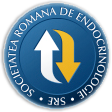
- Login
- Register
- Home/Current Issue
- About the journal
- Editorial board
- Online submission
- Instructions for authors
- Subscriptions
- Foundation Acta Endocrinologica
- Archive
- Contact
 Romanian Academy
Romanian Academy
 The Publishing House of the Romanian Academy
The Publishing House of the Romanian Academy

ACTA ENDOCRINOLOGICA (BUC)
The International Journal of Romanian Society of Endocrinology / Registered in 1938in Web of Science Master Journal List
Acta Endocrinologica(Bucharest) is live in PubMed Central
Journal Impact Factor - click here.

-
General Endocrinology
Karim A, Nasir-Afzal M
Pubertal development and growth among boys in a sample of local Pakistani populationActa Endo (Buc) 2009 5(2): 165-175 doi: 10.4183/aeb.2009.165
AbstractObjective. Few studies are available on the temporal sequence and effect of ethnicity,\r\nsocioeconomic status and environment on pubertal changes leading to sexual maturation in\r\nboys; therefore, we describe normative values for developmental changes in physical and\r\nendocrine characteristics at onset and during progression of the pubertal process in a cohort\r\nof Pakistani boys.\r\nDesign. This cross-sectional study involved 234 healthy, 8-18 years old, school-based boys.\r\nMethods. Body weight, height, appearance of pubic hair patterns and testicular volume\r\n(TV) along with serum FSH, LH, testosterone and GH levels were measured.\r\nResults. Pubarche was first recorded at a mean age of 11.3 years [Tanner stage 2]. TV of\r\n3 ml and the first significant increase in mean serum FSH and LH levels were detected at 10\r\nyears of age. The mean percent increase in TV/year was maximal from 12-14 years, coinciding\r\nwith rising testosterone levels. The levels of gonadotropins increased more than 2-fold between\r\n12-14 years. Whereas, LH continued to increase in postpubertal boys and FSH levels plateaued\r\nat 15 years. GH concentrations were shown to be maximal at 12-13 years and declined\r\nthereafter to prepubertal values. However, BW and height were significantly correlated with\r\nage; yet no significant correlation was seen between body mass index (BMI) and age.\r\nConclusion. The present data among boys indicates an earlier transition to the Tanner stage\r\n2 and an increase in TV, resulting in a slightly more extended period of pubertal development, as\r\ncompared to European and American children pointing to ethnic, social and economic differences. -
Perspectives
Zosin I
Development of Cooperation between Endocrinologists and Ophthalmologists: European Group on Graves’ Orbitopathy (EUGOGO)Acta Endo (Buc) 2014 10(2): 165-168 doi: 10.4183/aeb.2014.165
AbstractGraves’ orbitopathy (GO) is an autoimmune condition and the main extra thyroidal expression of Graves’ disease. Optimal management of GO comprises a coordinated approach addressing the thyroid dysfunction and the orbital disease, which requires a strict collaboration between internists/ endocrinologists, ophthalmologists/ orbital surgeons and basic scientists, in combined thyroid-eye units. European Group on GO (EUGOGO) is a multidisciplinary association of endocrinologists, ophthalmologists, neuroradiologists and epidemiologists from the European centers, who have special clinical and research interests in GO. -
Endocrine Care
Toma A, Sava M, Delia C, Simescu M, Tomescu E, Coculescu M
Universal salt iodization effects on endemic goiter in Arges county, RomaniaActa Endo (Buc) 2005 1(2): 167-180 doi: 10.4183/aeb.2005.167
Abstract ReferencesBackground. In the Carpathian area of Romania the Iodine Deficiency Disorders (IDD) including endemic goiter are a public health problem. Recently, the legislation imposing salt iodization was strengthened (from 10 to 20 ± 5 mg iodine/kg salt) and enlarged (universal salt iodization, USI, has been applied to bread industry since 2002). Objective. The effect of bread iodization by law upon the characteristics of goiter endemy was assessed in Arges county, Romania. Design. The characteristics of goiter endemy (as defined by WHO/ICCIDD/UNICEF) were determined in children in the years 1999 (control group C) and 2004 (study group S), two years after universal bread iodization. In the control group C there were 1,241 schoolchildren 6-14 years old, living in 5 villages and in Pitesti town. In the study group S there were 408 schoolchildren 6-12 years old, living in 7 villages and in Pitesti town. After universal bread iodization, a neonatal screening for hypothyroidism was also performed on 11,216 newborns in Arges county, between January 2003 and December 2004. The content of KIO3 in the salt was assessed both in samples collected from village shops in the years 1999 (10 samples) and 2004 (17 samples). The iodine content of drinking water in Arges county villages was assessed in 1999. Methods. Three parameters of IDD endemy were evaluated, i.e. the thyroid volume in schoolchildren by palpation or/and ultrasonography, urinary iodine by the Sandell-Kolthoff method, and neonatal blood TSH levels in dry spot by immunoassay. A questionnaire was filled in by 912 schoolchildren in 1999 and by 408 schoolchildren in 2004.1. Hetzel BS. Eliminating iodine deficiency disorders?the role of the International Council in the global partnership. Bull World Health Organ 2002; 80(5):410-413.2. Bleichrodt N, Born M. Metaanalysis of research on iodine out its relationshp to cognitive development. The damaged brain of iodine deficiency. Cognizant communication, Ed. Stanbury G.B, 1994:195-200.3. Milcu St.M. Endemic Goiter (in Romanian). Bucharest: Editura Academiei Republicii Populare Romane, 1956.4. Coculescu M, Ursu H. Endemic goiter and iodine deficiency disorders (in Romanian). In: College of Physicians from Romania. Guidelines for Practical Medicine. Bucharest: InfoMedica, 2001:119-152.5. WHO, Unicef, ICCIDD. Assessment of the Iodine Deficiency Disorders and monitoring their elimination. WHO publ.WHO/NHD/01.1, 1-107. 2001. Geneve.6. Brunn J, Block U, Ruf G, Bos I, Kunze WP, Scriba PC. [Volumetric analysis of thyroid lobes by realtime ultrasound (author?s transl)]. Dtsch Med Wochenschr 1981; 106(41):1338-1340. [CrossRef]7. Bull.World Health Organ. Recommended normative values for thyroid volume in children aged 6-15 years. World Health Organization & International Council for Control of Iodine Deficiency Disorders. Bull World Health Organ 1997; 75(2):95-97.8. Zimmermann MB, Saad A, Hess S, Torresani T, Chaouki N. Thyroid ultrasound compared with World Health Organization 1960 and 1994 palpation criteria for determination of goiter prevalence in regions of mild and severe iodine deficiency. Eur J Endocrinol 2 [CrossRef]9. Zimmermann MB, Molinari L, Spehl M, Weidinger-Toth J, Podoba J, Hess S et al. Toward a consensus on reference values for thyroid volume in iodine-replete schoolchildren: results of a workshop on interobserver and inter-equipment variation in sonographic [CrossRef]10. Pandav CS, Arora NK, Krishnan A, Sankar R, Pandav S, Karmarkar MG. Validation of spot-testing kits to determine iodine content in salt. Bull World Health Organ 2000; 78(8):975-980.11. Delange F. Screening for congenital hypothyroidism used as an indicator of the degree of iodine deficiency and of its control. Thyroid 1998; 8(12):1185-1192. [CrossRef]12. Toma A, Diaconu B, Sava N, Nedelcu M, Coculescu M. Persistence of neurological endemic cretinism in ancient goitrogenous areas. Acta Endocrinologica (Buc), New Series, in press.13. Simescu M, Neagu C, Rusea D, Zosin I, Nicolaescu E, Gudovan E, Marinescu E. Nitrates(N) and organochlorine pesticides(OCP) elimination in subjects with normal and marginal iodine uptake and OCP effects on thyroid parameters. Budapest: P?ter F, Wiersinga14. Pretell EA, Delange F, Hostalek U, Corigliano S, Barreda L, Higa AM et al. Iodine nutrition improves in Latin America. Thyroid 2004; 14(8):590-599. [CrossRef]15. Golkowski F, Szybinski Z, Huszno B, Stanuch H, Zarnecki A. Ultrasound measurement of thyroid volume in the nation-wide epidemiological survey of iodine deficiency in Poland. Endokrynol Pol 1993; 44(3), 351-358.16. Syrenicz A, Napierala K, Celibala R, Majewska U, Krzyzanowska B, Gulinska M et al. Iodized salt consumption, urinary iodine concentration and prevalence of goiter in children from four districts of northwestern Poland (Szczecin coordinating center). End17. Grzesiuk W, Kondracka A, Slon M, Wojda M, Nauman J. Salt iodination as an effective method of iodine supplementation. Med Sci Monit 2002; 8(4):CR288-CR291.18. Toromanovic A, Tahirovic H. Thyroid volume measurement by ultrasound in schoolchildren from mildly iodine-deficient area. Bosn J Basic Med Sci 2005; 5(1):19-22.19. Zamrazil V, Bilek R, Cerovska J, Delange F. The elimination of iodine deficiency in the Czech Republic: the steps toward success. Thyroid 2004; 14(1):49-56. [CrossRef]20. Delange F, Van Onderbergen A, Shabana W, Vandemeulebroucke E, Vertongen F, Gnat D et al. Silent iodine prophylaxis in Western Europe only partly corrects iodine deficiency; the case of Belgium. Eur J Endocrinol 2000; 143(2):189-196. [CrossRef]21. Aghini-Lombardi F, Antonangeli L, Pinchera A, Leoli F, Rago T, Bartolomei AM et al. Effect of iodized salt on thyroid volume of children living in an area previously characterized by moderate iodine deficiency. J Clin Endocrinol Metab 1997; 82(4):1136-1 [CrossRef]22. Vulpoi C, Mogos V, Zbranca E. Thyroid volume in a former iodine deficient area (in Romanian). Romanian Journal of Endocrinology and Metabolism 2002; 1(3):17-21.23. Vitti P, Martino E, Aghini-Lombardi F, Rago T, Antonangeli L, Maccherini D et al. Thyroid volume measurement by ultrasound in children as a tool for the assessment of mild iodine deficiency. J Clin Endocrinol Metab 1994; 79(2):600-603. [CrossRef]24. Gutekunst R, Martin-Teichert H. Requirements for goiter surveys and the determination of thyroid size. New York: Plenum Press, 1993:109-118.25. Zimmermann MB. Assessing iodine status and monitoring progress of iodized salt programs. J Nutr 2004; 134(7):1673-1677.26. Zimmermann MB, Hess SY, Adou P, Toresanni T, Wegmuller R, Hurrell RF. Thyroid size and goiter prevalence after introduction of iodized salt: a 5-y prospective study in schoolchildren in Cote d?Ivoire. Am J Clin Nutr 2003; 77(3):663-667.27. Jooste PL, Weight MJ, Lombard CJ. Short-term effectiveness of mandatory iodization of table salt, at an elevated iodine concentration, on the iodine and goiter status of schoolchildren with endemic goiter. Am J Clin Nutr 2000; 71(1):75-80.28. Zimmermann MB, Wegmuller R, Zeder C, Torresani T, Chaouki N. Rapid relapse of thyroid dysfunction and goiter in school-age children after discontinuation of salt iodization. Am J Clin Nutr 2004; 79(4):642-645.29. Costante G, Grasso L, Ludovico O, Marasco MF, Nocera M, Schifino E et al. The statistical analysis of neonatal TSH results from congenital hypothyroidism screening programs provides a useful tool for the characterization of moderate iodine deficiency re -
Endocrine Care
Matulevicius V, Zilaitiene B, Preiksa RT, Banisauskaite I, Jureviciute J, Abramavicius S, Matuleviciute I, Kurakovas T, Ostrauskas R, Verkauskiene R, Urbanavicius V
Approaches to the 26–36-year-old Lithuanian Men’s Sexual FunctionActa Endo (Buc) 2016 12(2): 168-176 doi: 10.4183/aeb.2016.168
AbstractContext. In the year 2003-2004 a circumstantial investigation of young men reproductive health parameters was performed in Nordic and Baltic countries, but sexuality remained undetermined. Objective. To determine the suitability of the European Male Ageing Study – Sexual Function Questionnaire (EMAS – SFQ) for investigation of sexuality of 26–36 year aged general population and to investigate sexuality of Kaunas participants in the project “The reproductive function of Estonian, Latvian and Lithuanian Young men (2003-2004)” (KELLY), using EMAS – SFQ. Design. Sixty one 26–36 year aged KELLY men were recaptured from the list of participants in a 2003-2004 study and completed EMAS – SFQ. Their anthropometric characteristics, scores of sexuality (22 parameters from EMAS – SFQ, 3 calculated parameters and 2 parameters consisting from answers to the only question - masturbation and erectile function-for each participant) were analysed, in conjunction with anthropometric, sperm quality and hormone levels of 2003-2004 18–25 year old general population. Results. Overall sexual functioning and masturbation were higher as compared to all the published data for different age men and different testosterone concentration groups of EMAS study. Conclusions. KELLY sexuality results, obtained using EMAS – SFQ, would be considered as referral values for young men in countries with generally good reproductive health. -
Endocrine Care
Oz II, Bilici M, Serifoglu I, Karakaya Arpaci D, Buyukuysal MC, Bayraktaroglu T
Association of Pancreas Volume and Insulin Resistance with Abdominal Fat Distribution in Type-2 Diabetes as Evaluated by Computed TomographyActa Endo (Buc) 2017 13(2): 168-173 doi: 10.4183/aeb.2017.168
AbstractPurpose. We aimed to assess the relationship between the regional body fat distribution and insulin resistance and pancreas volume (PV) in type-2 diabetes (DM) patients. Methods. Fifty-three consecutive type-2 diabetic and 51 non-diabetic patients matched by age, gender and body mass index (BMI) were enrolled. Subcutaneous adipose tissue (SAT), visceral adipose tissue (VAT), waist circumference, and PV were measured with computed tomography. Insulin resistance was assessed by the homeostasis model assessment of insulin resistance (HOMA-IR). Results. Patients with type-2 DM had significantly lower PV than non-diabetic individuals. HOMA-IR ranged from 0.74 to 6.24; and from 0.37 to 3.26, in type-2 DM patients and non-diabetics, respectively. VAT was positively correlated with HOMA-IR in two groups. There were inverse correlations between PV and VAT and VAT/SAT but only in diabetics. Conclusions. The VAT/SAT ratio may reflect the possible role of VAT to better understand the pathogenesis of obesity-related disorders in patients with type-2 DM. -
General Endocrinology
Qu P, Li Y, Hu X, Guo Y, Zhu Y, Li X , Zhao J
The Effect of Adiponectin Via Regulating the Bone Microenvironment Oxidative Stress on Osteogenesis in Type 2 Diabetic RatsActa Endo (Buc) 2021 17(2): 168-176 doi: 10.4183/aeb.2021.168
AbstractObjective. To observe the effect of adiponectin on osteogenesis in type 2 diabetic rats. Methods. The 4th-week-old male SD rats were divided into normal control group (n=18) and diabetic model group (n = 42). Type 2 diabetes was induced by high-fat and high-sugar diet and intraperitoneal injection of a low dose of streptozotocin (STZ). The successfully-induced diabetic rats were divided into diabetic group (DM=18) and adiponectin intervention group (APN=18). APN group was injected with APN 10 μg/kg*d. The rats were separately sacrificed at the 4th, 8th and 12th week after the intervention. Bone microstructure and adipose tissue were observed via HE staining. Bone marrow was extracted from one side of the femur, and the supernatant was achieved by centrifugation. After BMD assessed by DXA, the other side of the femur was for further HE staining. Runx-2 expression in the bone marrow cells was detected by RT-PCR. BALP and AOPPs in bone marrow supernatant were assayed by ELISA. AGEs were detected by immunohistochemical staining. Results. With the feeding time over, blood glucose, AOPP, and AGEs were increased, and Runx-2 mRNA, BALP, BMD were decreased in diabetic rat group(P<0.05). Oxidative stress (OS) maker (AOPP) was decreased and osteogenesis makers (Runx2 mRNA, BALP) were increased after intervention with exogenous adiponectin (P<0.05). At the 8th and 12th week, the trabecular bone became thinner and broken, and the fat cell number increased in all 3 groups, especially in the DM group. The adiponectin intervention group showed that the trabecular bone structure was moderately restored. Conclusions. OS is obvious in bone microenvironment in diabetic rats. OS may have an inhibitory effect on regulation of osteogenic differentiation factor Runx2, causing down regulation of osteoblast differentiation and bone formation. Adiponectin may improve OS response and protect the bone structure. -
General Endocrinology
Cocolos AM, Vladoiu S, Caragheorgheopol A, Ghemigian AM, Ioachim D, Poiana C
Vitamin D Level and its Relationship aith Cancer Stage in Patients with Differentiated Thyroid CarcinomaActa Endo (Buc) 2022 18(2): 168-173 doi: 10.4183/aeb.2022.168
AbstractBackground. Differentiated thyroid carcinoma (DTC) has witnessed an increase in incidence and although it is considered to have a slow grow potential and a 90% 10- year survival rate, local or distant metastases can be observed in 20%. It is essential to recognize other factors associated with malignancy and poor prognosis. Vitamin D and its deficiency has proven useful as a prognostic biomarker for many types of cancer, including thyroid cancer. Aim. Evaluate the relationship between vitamin D status in DTC and benign thyroid disorders patients and correlation between vitamin D and histopathological findings in DTC group. Methods. Study included 170 patients with confirmed DTC and 200 with benign thyroid pathology. Evaluation included 25-hydroxy vitamin D [25(OH)D], ultrasound and histopathologic features. Results. In DTC patients, mean value of vitamin D was significantly lower (17.86 ng/mL ± 9.31 DS versus 20.26 ng/mL ± 9.31 DS, p=0.029). Statistical analysis confirmed a negative correlation between vitamin D levels and tumor size (T) according to TNM classification (r=-0.176, p=0.02). Conclusions. Vitamin D level was significantly lower in the DTC group and 25(OH)D levels may be correlated with histopathology features like tumor size and aggressiveness according to TNM classification. -
General Endocrinology
Duran R, Marakoglu K, Vatansev H, Kizmaz M, Saracligil, Aybatti E, Demirci V, Kebapcilar L
Evaluation of the Relationship between Medical Nutrition Treatment, PENTRAXIN-3, HSCRP and Body Composition Analysis in Type 2 Diabetic PatientsActa Endo (Buc) 2023 19(2): 169-177 doi: 10.4183/aeb.2023.169
AbstractObjective. Medical Nutrition Therapy (MNT) is important in the treatment and regulation of diabetic patients. In this study, it was aimed to evaluate the effects of medical nutrition therapy on Pentraxin-3, hsCRP and body composition analysis in Type 2 diabetes patients (DM). Methods. This study included 160 individuals who were admitted and diagnosed with Type 2 DM. Laboratory, clinical, anthropometric and body composition parameters were obtained 3 months after baseline evaluation of the patients and the MNT was given by the dietitian. Results. After 3 months MNT, weight, body mass index, waist circumference, body fat weight, body fat ratio and visceral fat area (p<0.001), glucose (p<0.001), insulin (p=0.033), HOMA index (p=0.004), HbA1c (p<0.001), total cholesterol (p=0.001), LDL (p=0.008), ALT (p<0.001) and hsCRP (p<0.001) levels were significantly lower than they were before MNT. There wasn’t significant difference in triglyceride (p=0.509), HDL (p=0.079), Pentraxin-3 (p=0.706) levels and waist-to-hip ratio (p=0.802). The level of Framingham risk score after MNT was significantly lower (p<0.001). Conclusion. In this study, it was cocluded that MNT, applied to patients with Type 2 DM decreased cardiovascular risk and inflammation, contributed to the maintenance of glycemic control, and a significantly improved the body composition. -
General Endocrinology
Akbas F
Protective Effect of Insulin Treatment on Early Renal Changes in Streptozotocin-Induced Diabetic RatsActa Endo (Buc) 2018 14(2): 169-174 doi: 10.4183/aeb.2018.169
AbstractObjectives. Chronic kidney disease is a progressive complication of diabetes mellitus (DM). This study aimed to analyse early renal changes in streptozotocin induced diabetic rats and demonstrate the effect of early treatment with insulin on kidney’s histology. Methods. 30 male-adult Sprague-Dawley rats were included in the study. Diabetes was induced in 24 of the rats by a single injection of 65 mg/kg streptozotocin dissolved in saline. 5 units/day NPH insulin injection was started to 10 rats as treatment group and 11 rats were followed untreated. 6 rats constituted the control group. Induction of diabetes failed in 3 animals and 3 untreated rats died during the study. After 21 days, all rats were sacrificed and their kidneys were removed to obtain histological sections to be evaluated by light microscopy. Results. Ten treated and 8 untreated diabetic rats and 6 healthy controls, totally 24 rats completed the study. There was a significant weight loss in treated and untreated diabetic groups and a weight gain in the control group (p<0.05). Final blood glucose levels were significantly higher in untreated diabetic group when compared to treated diabetic and control groups and higher in treated diabetic group when compared to control group. Histological analysis of kidney sections showed normal morphology in control group. Changes like increased mesangium, tubular atrophy and tubules with dilated lumen and irregular cell shapes were found in the untreated group whereas, glomerulus and mesangium showed similar morphology with control group with a few changes in tubules, in insulin-treated group. Conclusion. In DM, renal changes start at an early point and it is possible to prevent/delay those changes at this point with early intervention of insulin treatment. -
General Endocrinology
Malutan AM, Costin N, Ciortea R, Dragos C.M, Mihu D, Dorin G
Bone Mineral Density and Proinflamatory Cytokines (IL-1ß and TNFa) in MenopauseActa Endo (Buc) 2014 10(2): 169-180 doi: 10.4183/aeb.2014.169
AbstractBackground. Osteoporosis has a high incidence after menopause, and at the same time the relationship between menopausal oestrogen deprivation and proinflammatory status is considered to be involved in postmenopausal bone turnover. Objective. The aim of this study was to evaluate the serum levels of IL-1β and of the TNFα in pre and postmenopausal women, as well as to investigate the relationship between these cytokines and bone mineral density. Design. A case-control study was performed during a period of 12 months. Subjects and Methods. The study included 150 women divided into 4 study groups. Serum levels of IL-1β and TNFα were determined using multiplex cytokine kits. BMD was measured by DXA at the level of the hip and lumbar spine. Results. Serum concentration of IL-1β is significantly higher in natural and surgically induced menopausal women, compared to women in the control group. Serum levels of TNFα in postmenopausal women and with surgically induced menopause are significantly higher than in fertile and premenopausal women. Serum levels of IL-1β are significantly higher in patients with osteopenia and osteoporosis compared to patients with normal BMD values. We found a negative correlation between serum levels of IL-1β, TNFα and BMD in pre and postmenopausal women, and in women with surgically induced menopause. Conclusions. Serum levels of IL- 1β and TNFα are significantly higher in menopausal women compared to fertile women. IL-1β is significantly higher in patients with osteopenia and osteoporosis than in women with normal BMD values, and IL-1β and TNFα associate negatively with BMD in pre and postmenopausal women, as well as in women with surgically induced menopause.